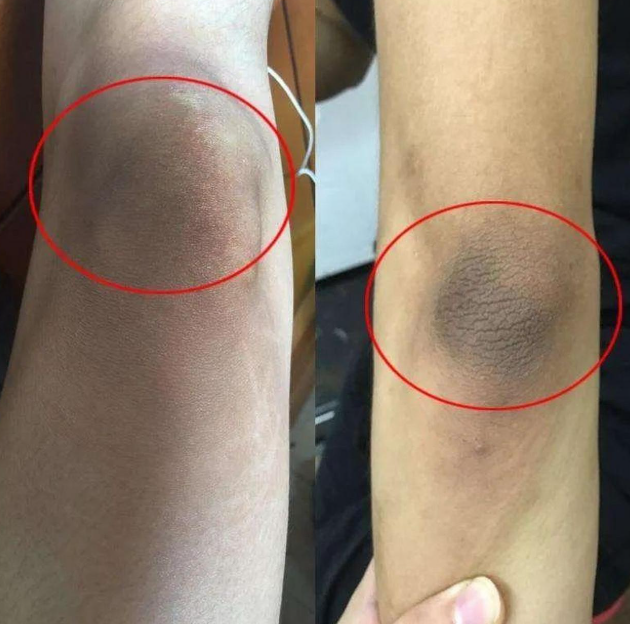
Your elbows. They’re the workhorses of your body, the hinges that allow you to lift, lean, and push through life. For most of us, they’re out of sight and out of mind—until one day, you notice a change. The skin, once the same tone as the rest of your arm, has taken on a darker, velvety appearance. It might feel thicker, even a little rough to the touch. You might try scrubbing it in the shower or slathering it with lotion, but the darkness remains, stubborn and silent.
It’s easy to dismiss this as just another sign of wear and tear, a consequence of a lifetime of leaning on desks and countertops. But what if your body is trying to send you a message? That dark, velvety skin on your elbows isn’t just a cosmetic issue; it’s a billboard, and your hormones have rented the space to post an important warning.
This condition is known as Acanthosis Nigricans (uh-kan-THO-sis NIH-grih-kans). While it can sometimes be a benign genetic trait, when it appears in adulthood, it is very often a visible cry for help from your endocrine system. Here’s what your hormones are warning you about.
The Primary Warning: Insulin Resistance and Pre-Diabetes
This is the most common and significant message behind darkened elbow skin.
- The Hormonal Chain Reaction: When you eat, your body breaks down carbohydrates into glucose (sugar), which enters your bloodstream. In response, your pancreas should release insulin, a hormone that acts like a key, unlocking your cells to let the glucose in for energy. In insulin resistance, your cells stop responding well to that key. They’ve become “resistant.” Your pancreas, in a panic, pumps out more and more insulin to try and force the cells to respond.
- The Connection to Your Elbows: All that excess insulin in your bloodstream has a strange side effect. It stimulates the skin cells, called keratinocytes, to grow and multiply rapidly. It also triggers an abnormal production of melanin, the pigment that gives skin its color. The result? Patches of skin—most commonly on the elbows, nape of the neck, armpits, and groin—become thick, dark, and velvety. Your elbows are essentially showing you a physical map of your body’s struggle to manage blood sugar.
Other Hormonal Warnings to Heed
While insulin resistance is the lead suspect, your darkened elbows can also be a signal of other hormonal imbalances.
- Thyroid Dysfunction: Your thyroid gland is the master regulator of your metabolism. When it’s underactive (a condition called hypothyroidism), your entire bodily system slows down. This can disrupt skin cell turnover and contribute to dry, coarse, and sometimes darkened skin in areas of friction, like the elbows.
- Polycystic Ovary Syndrome (PCOS): This common hormonal disorder in women is strongly linked to insulin resistance. In fact, the presence of Acanthosis Nigricans is one of the key diagnostic clues for PCOS. The darkened skin is an external sign of the internal hormonal chaos the condition causes.
- Problems with the Adrenal Glands: In rare cases, Acanthosis Nigricans can be linked to disorders of the adrenal glands, which produce hormones like cortisol. Certain tumors can also produce hormones that trigger this skin change, though this is much less common.
What to Do When You See the Sign
Seeing this change on your skin can be unsettling, but it should be seen as an opportunity—a chance to get ahead of a problem before it becomes more serious.
- Don’t Scrub, Listen. Stop trying to scrub or bleach the darkness away. It’s not dirt; it’s a signal. Thank your body for sending you such a clear, early warning.
- Schedule a Doctor’s Appointment. This is your most important step. See your primary care physician or an endocrinologist. Point to your elbows and say, “I’m concerned this might be Acanthosis Nigricans.” A doctor can connect the dots.
- Get the Right Tests. Your doctor will likely order a simple blood test called a Hemoglobin A1c, which gives a snapshot of your average blood sugar levels over the past three months. They may also check your fasting glucose and insulin levels. A thyroid panel is also a common and wise next step.
- Embrace Lifestyle as Your Best Medicine. The most powerful way to reverse both the skin condition and the underlying insulin resistance is through lifestyle changes. You have the power to change this narrative.
- Move Your Body: Regular physical activity, even just brisk walking, makes your cells more sensitive to insulin. It’s like oiling the lock so the key works smoothly again.
- Rethink Your Plate: Focus on a diet rich in fiber (vegetables, legumes), lean protein, and healthy fats. Reduce your intake of sugary drinks, refined carbohydrates (white bread, pasta), and processed foods.
- Manage Stress and Sleep: Chronic stress and poor sleep can worsen insulin resistance. Prioritizing rest and finding healthy ways to decompress are not luxuries; they are critical parts of the treatment.
The darkening of your elbows is not a flaw to be hidden. It is a wake-up call written on your own skin. It’s your body’s way of waving a flag, urging you to pay attention to the delicate hormonal balance within. By heeding this warning, you’re not just working to restore the color of your skin; you’re taking a powerful, proactive step to safeguard your long-term health and vitality.